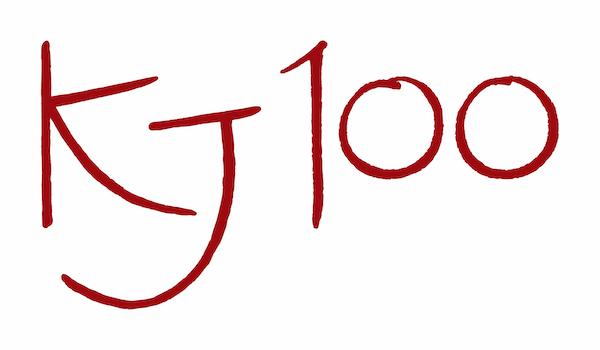
Lauren Deutsch finally found her long-lost slide of the shopfront she describes in Kyoto View 18, ‘Finding Home’ — after KJ100 went to the printer. So, we’re posting her reminiscence again here, together with the photo.
The MIPPW—Most Important Piece of Paper in the World—was a hand-drawn map of a neighborhood in north-east quadrant of Gojo/Horikawa where I was staying during training at Urasenke tea school 34 years ago. My “address,” like many in Kyoto, relied on certain geographic features, rather than following a street name and numbers. I had no idea what the signs on the post next to the apartment said, as I cannot read much kanji. The MIPPW served me like the notes next to cookies for Alice in Wonderland.
After school, in late autumn twilight, I would travel southbound on the Horikawa bus from Teranouchi, getting off at Gojo, and ducking behind the main thoroughfare into the warren of look-alike wooden-fronted machiya, MIPPW now in hand. When I passed a huge statue of Kannon, standing guard 24/7 by the door of one of the many Buddhist temple supply shops now closed for the day, I knew I was close. Breathing a sigh of relief, I announced to the granite, “Honey, I’m home!”
I also relied on the MIPPW for my nightly saunter to the Hakusan sento, a simple place of refuge for my exhausted body and soul, worn out after hours of intense sitting seiza on tatami in kimono. The MIPPW was one of the few things I needed on my pilgrimage through the dimly-lit lanes to that humble, steamy paradise.
One night, after a bit too much warm sake, I went to Hakusan wearing geta and wrapped in a yukata under my rain coat, without the MIPPW. I got there on muscle memory and bravado. Taking my entry fee, the sento matron patronized me with an uncommon smile. As ridiculous as I looked, I felt at home and quietly joined salarywomen and schoolgirls hunched over spigots and basins, our dripping nakedness reminding me of freshly boiled shrimp. “Finally!” I muttered to myself, “I conquered the bath-house!”
Pink-cheeked but sober and tired, I still had to get home. I scrambled my sleepy memory for a few internalized guideposts—the restaurant window with a flower arrangement, a sign with modernist black cats against a yellow circle, the “antique” shop window with shadows of material remnants of Meiji cast by a flickering fluorescent. It all looked familiar… except the noren curtains were gone! I had no idea where I was. Retracing my steps from yet another dead end, I came upon a wooden shuttered facade upgraded with a metal roll security door. Painted on it was a mural of an otherworldly landscape in pink, blue and black, of palm trees, tall buildings and an ocean bay: it was the bluffs along the California Incline overlooking Pacific Coast Highway, located four blocks from my apartment in Santa Monica CA. In fact, I was “home.”


Lauren W. Deutsch, a tea aficionado from L.A., and long-time regular contributor, is a KJ board member. Her article ‘Shokka,’ on the artisan families supporting tea culture in Kyoto, also appears in KJ100, excerpted from ‘The Sword and the Scoop’ (KJ 89).
Photo by the author